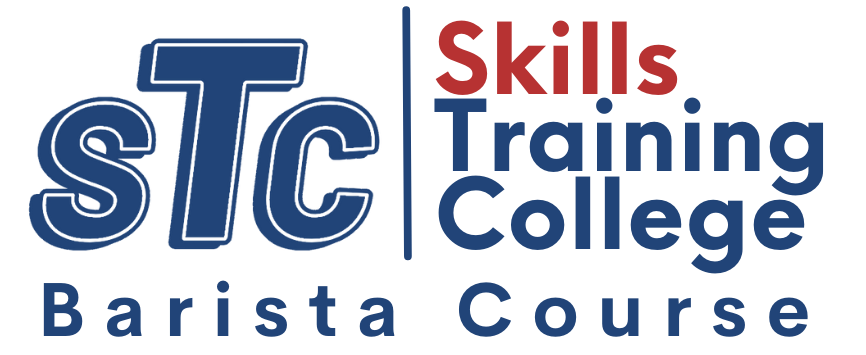*Our training is hands-on, practical, and tailored to the needs of each individual student*
*Our training is hands-on, practical, and tailored to the needs of each individual student*

The cappuccino is, without doubt, one of the most iconic espresso-based drinks of all time. It is known for its velvety, rich foam milk on top. How to make the perfect cappuccino is a skill all baristas must have. The cappuccino is a staple in many coffee shops and cafes not only in Australia but all over the world.
Contrary to what others think, a cappuccino is not the same as a latte. Although their base is an espresso shot, the two vary in terms of the proportions of coffee, milk, and foam.
The original cappuccino has fallen out of favour in recent years. Changes with the bean heads and coffee chains increasingly favour the less frothy, milkier, flat white. But when it is properly made, the cappuccino remains a timeless classic.
Cappuccino means “little cap” in Italian. The term describes the head of foamed milk that sits at the top of the drink’s espresso base. According to Wikipedia, cappuccino is allegedly derived from the dress of the Capuchin order of monks or friars. A cappuccino is brown in colour similar to the robes worn by the Capuchin monks in Vienna.
The espresso machine is what professional baristas, as well as home baristas, use when making cappuccino. The usual steps start with pouring into the bottom of the cup, followed by a similar amount of hot milk. Using the steam wand of the espresso machine, heat, and texture the milk. The top third of the cappuccino consists of milk foam, which you can decorate with art. You can make coffee art using the same milk or by sprinkling it with cinnamon or cocoa powder.
Before anything else, a cappuccino is best made using a ceramic cup. The perfect cappuccino should be dense, fine, bubbly, and 150 ml of liquid in total.
For the perfect mix, use one 30 ml shot of coffee and 120 ml of ‘wet’ milk. You will need an espresso machine with a steamer to warm and froth it to 65 degrees Celsius. The official recipe uses full-fat cows’ milk for a much fuller taste.
Baristas acknowledge that a higher fat content gives much smoother and creamier froth to cappuccino than using skimmed or semi-skimmed milk.
It is best to serve the cappuccino in a 200 ml ceramic cup. The extra 25% of the volume will be taken up by the air in the foamy milk.
The secret for a velvety milk froth in a cappuccino is about the type of milk. The milk should at least have 3% of proteins and 3.5% of fats. The proteins in the milk when incorporating with air make the froth velvety, while fats make the froth steady and homogeneous.
Another tip on milk frothing concerns the temperature. For best results, milk should be cold and straight out of the fridge with a temperature of around 5° C – 41 ° F. In this way, there is enough time to steam the milk before it reaches the correct temperature. The end result will be a creamy and dense texture.
As mentioned, the tradition of making a cappuccino requires the use of full-cream cows’ milk. However, it is possible to use semi-skimmed or lactose-free milk, as well as many vegetable drinks. If you are using any of these milk options, please check the content of proteins and fats. It is crucial to making a perfect foam for your cappuccino.
For the Espresso
For the Foamed Milk
While there are multiple steps to this cappuccino recipe, it can break down into workable steps. It will help you better plan for pulling shots, steaming milk, and assembling your beverage.
STEP 1: Prepare the espresso in a cappuccino.
STEP 2: Pour the milk directly into the cup. Aim to start at the center and in a continuous circular motion towards the rim.
STEP 3: Make sure that the steam wand cloth is moist. Remove the steam wand and pull it in a far up and straight position. Place the pitcher aligning the nozzle to the steam wand.
Ensure that the steam wand nozzle is in the middle of the pitcher, just below the milk surface. Tilt the pitcher at an angle that will optimise the whirlpool later on.
STEP 4: Switch on the steam wand. Focus on creating the froth for the first couple of seconds until the milk reaches the 37-celsius temperature. During the frothing process, the volume of the milk increases. Be sure to have the steam wand nozzle close to the milk surface beginning to end. The longer you keep it close to the milk surface, the more froth you will create. Keep warming the milk until it reaches 55 to 62 degrees Celsius.
Once it reaches the right temperature, raise the pitcher to get the nozzle deeper into milk. Make sure that the nozzle does not touch the bottom.
STEP 5: Swirl the milk in the pitcher until it becomes smooth, silky, and shiny. Additional barista tip, place the jug with frothed milk on the counter and let it sit for around 30 seconds. In this way, the texture will become even.
The foam consistency mostly depends on the milk’s fat content. If unavailable, you can substitute whole milk with low-fat at the expense of some smoothness. The foam should never be dry or overly airy, but getting this consistency is not easy.
We all have our own tastes and cultural preferences when it comes to our coffee. But thinking about how we drink different types is a nice way to maximise the pleasure from every cup.
Before you put it on the menu, it is important to understand what a cappuccino is and how it compares to other espresso-based options. We recommend getting a barista basic course or barista pro to really appreciate the distinction.

Copyright © 2023 – All rights reserved.